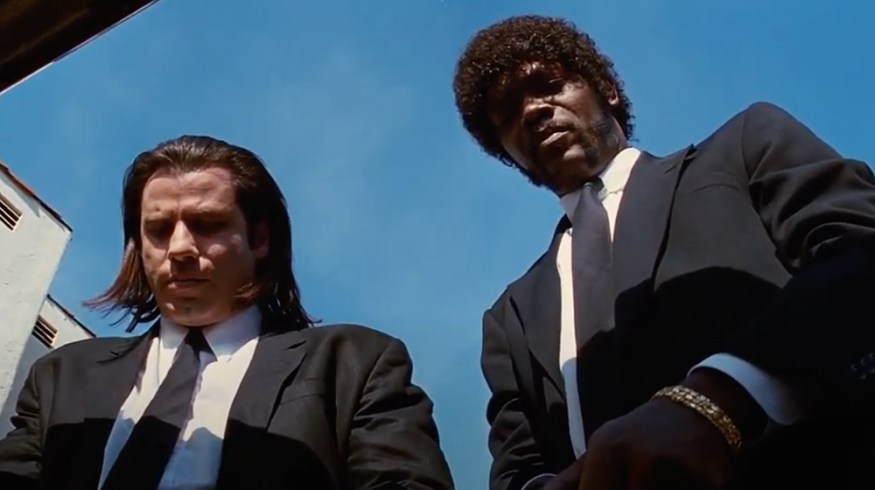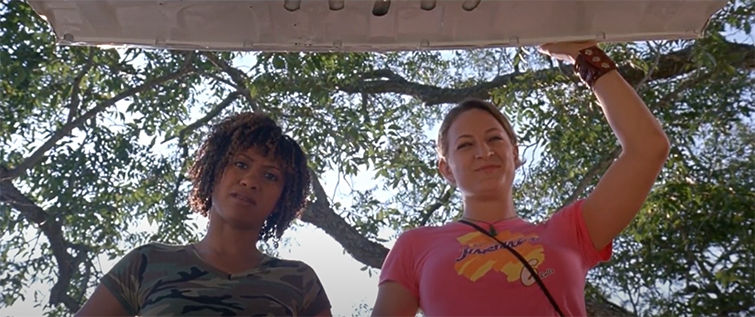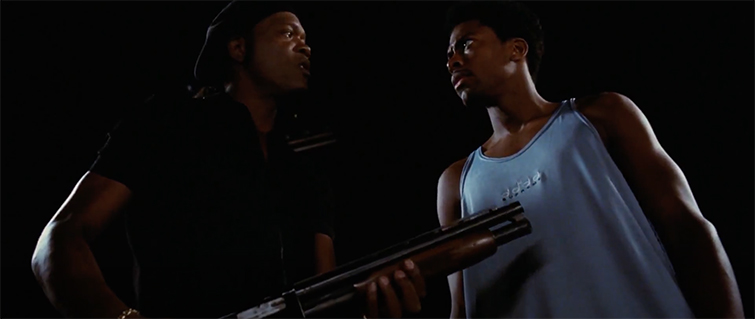
Breaking Down Quentin Tarantino’s Iconic Trunk Shot
From Reservoir Dogs to Kill Bill, we open up about what this director’s iconic trunk shot means and how he (and others) achieve it.
I’ve written about this before as one of our “7 Film School Clichés You Might Want to Avoid.” However, this one in particular still fascinates me for a number of reasons. If you’ve seen any of the great films by legendary filmmaker Quentin Tarantino, you know what I’m talking about. Usually at a critical moment in the film, Tarantino starts a shot in pure darkness before revealing our main characters looking down on us as they open a trunk.
It’s a cool, stylistic break in the narrative shot-reverse-shot of his dialogue-heavy films. And, while it also produces many copycat imitations by film school boys and girls, it might not be surprising to learn that Tarantino isn’t the first person to use this shot—or to make use of low angles or creative shot types. But, why does this shot work so well? Plus, how does Tarantino use it so expertly? Let’s break down everything about Tarantino’s iconic trunk shot.
Exploring Tarantino’s Trunk Shot
Looking first at Tarantino exclusively, the writer/director has used pretty much the same version of this same shot in six of his features, including Reservoir Dogs, Pulp Fiction, Jackie Brown, Kill Bill: Volume 1, Inglourious Basterds, and Death Proof (which is a slight exception as it’s actually a front hood shot). The shot also featured in From Dusk Till Dawn, which Tarantino wrote and appeared in, but was directed by friend Robert Rodriguez.
However, if you know anything about Tarantino’s work, you’ll know he’s not really an originator of anything, but rather a serial montager. You could make the case that this iconic trunk shot is a sendup to some of his favorite film noir and hardboiled crime directors like Anthony Mann and Richard Brooks. You can see some examples of these trunk shots from their films in this longer YouTube compilation of trunk shots below.
And, since Tarantino re-popularized this specific shot, it’s been further used in popular films and television, with examples like A Good Day to Die Hard, Pirates of the Caribbean: Dead Man’s Chest, Breaking Bad, and The Umbrella Academy. But, what’s really happening in these shots? And, why and how is Tarantino using this unique look?
The Tenets of the Trunk Shot

To properly appreciate Tarantino’s trunk shots, first look at when and why the director will often use them. In his early films, Tarantino uses the trunk shot as a means to further introduce his characters and develop them into more nefarious and gritty criminals, as seen in Reservoir Dogs, Pulp Fiction, and Jackie Brown. However, as his own filmography and cinematography becomes more recognizable, he later shifts the trunk shot (which many fans might be expecting for a film) towards more critical moments in the film, as is the case with Kill Bill: Volume 1.
However, regardless of when, the Tarantino trunk shot usually shares many of the same basic cinematography tenets like:
- Static camera
- Wide lens
- Low angle
- Two or more characters talking
- Character or item of importance in the trunk
- Naturalistic (but creative) lighting
While a few of these might be practical in terms of lensing and camera angle, it’s also important to recognize why he’s using this shot and what he hopes to achieve with this stylistic choice. For many of these scenes, Tarantino could easily shoot things from a more standard angle, as well as employ more traditional shot-reverse-shot elements for these conversations. However, for many of these cases, he wants you to not only focus on these characters and their conversation, but also on what’s inside the trunk.
The Importance of Camera Angle

Also, the crux of the trunk shot really comes down to camera angle. Yes, we’re getting a cool, stylistic choice of how to enter a scene. (And, as a bonus note, if you’re looking to use a trunk shot in one of your projects and can find a way to fade to black in your previous scene, your audience is going to get a nice treat in the transition!) But, along with all the elements above, Tarantino is really using this trunk shot as an excuse to film his character from this stylistic, and important, camera angle.
Shooting characters from a low camera angle accomplishes many things in the world of narrative filmmaking. For one, it makes them look big, powerful, and larger than life—especially when viewed on the big screen in a movie theater, where many would argue Tarantino’s films are meant to be seen.
It also helps to serve his narrative storytelling when he’s able to employ a reverse shot of either the item(s) or the character(s) in the trunk, as he can conversely shoot these subjects downwards from a high angle, making them look smaller, helpless, or weak—as is often the case in the narrative.
Different Filmmaking Approaches

So, how does one actually film these iconic trunk shots for their own use? Well, there are really two distinct approaches you can take.
The first would be to, you know, film the scene in an actual trunk. For many starting out or working on micro-budget productions, this is going to be your only option. And, your issues are going to involve finding creative ways to fit your camera and gear inside a trunk with enough space to still operate it. Here are some basics you’ll need:
- Small camera
- Minimal gear
- Makeshift tripod or mount
- Wide lens
- Remote/Monitor
- Small light or LEDs
The second approach, however, is how I believe Tarantino and many of these other big budget examples actually capture these shots, which is by faking a trunk. All you really need is a trunk lid and some sort of rigged-up device to hold it. The rest of the illusion could be created in how you frame that shot and by adding any sound effects you might need to make it really appear that a lid is being unlatched and swung open.
This would also allow a filmmaker and crew to set up as they normally would for a low angle shot by using this frame-within-a-frame technique, as well as provide much more space and opportunity to light your subjects in a way that looks naturalistic, but much more practical than any lights you could set up in a small trunk.
However, the real opportunity is for filmmakers to problem-solve this iconic trunk themselves with their own production crews and expertise. And remember, just because Tarantino has used this shoot numerous times doesn’t mean that your use has to be anything more than an homage itself. Look for other new and creative ways to tackle the composition as a means to help move your own narrative along.
For more cinematography tips and filmmaking advice, check out these articles below.
- 7 Standard Filmmaking Shots Every Cinematographer Must Know
- Cinematography Tips for Covering Your Master Shot
- How to Frame a Medium Shot Like a Master Cinematographer
- 7 Master Cinematography Techniques from Iconic Directors
- Mastering the Insert Shot for Your Film and Videos
Cover image from Pulp Fiction via Miramax.






